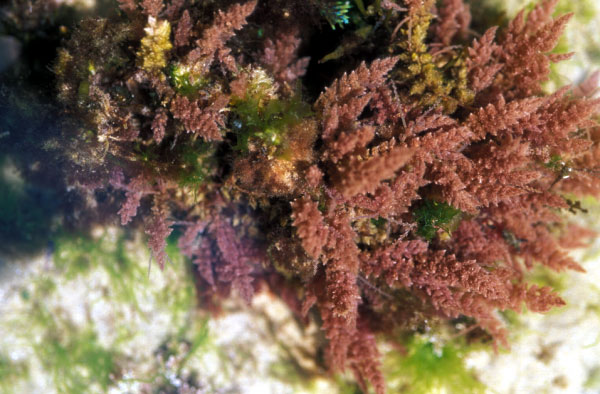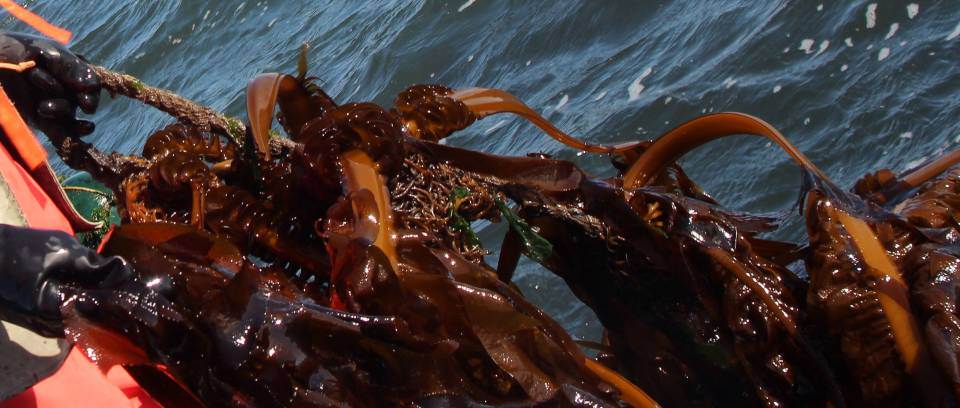This study aimed to identify the optimal doses of the macroalgae Asparagopsis taxiformis and Oedogonium sp., individually and in combination, which would decrease the in vitro production of methane while minimizing adverse ef- fects on fermentation, using rumen inoculant from Bos indicus steers. The dose-response experiment evaluated ten doses of Asparagopsis [ranging from 0 to 16.7 % of the organic matter (OM) incubated] and seven doses of Oedogonium (ranging from 0 to 100 % OM) using Rhodes grass hay as a basal substrate. Asparagopsis was highly effective in decreasing the production of methane with a reduction of 99 % at doses aslowas2%OMbasis.However,adoseof2%OMalso decreased the production of volatile fatty acids (VFA). Oedogonium was less effective with doses ≥50 % OM signif- icantly decreasing the production of methane. A combination of Asparagopsis (2 % OM) and Oedogonium (25 and 50 % OM) continued to suppress the production of methane, inde- pendent of the inclusion rate of Oedogonium. The effective- ness of Asparagopsis demonstrates its potential for the miti- gation of methane emissions from ruminants at inclusion rates of ≤2 % OM. Oedogonium is a potential feed supplement due to its nutritional value, but supplements ≤25 % OM are recommended to avoid adverse effects on apparent in vitro fermentation.
Digital library
-
-
In view of the broad-based support of several federal agencies for enhanced mariculture of coastal resources, including the National and New England Sea Grant College Programs, Northeast Regional Aquaculture Center, Departments of Commerce and Agriculture, and the National Science Foundation, a study of domesticating indigenous species of Porphyra was undertaken for commercial cultivation. Nori cultivation has one of the greatest potentials for generating a viable seaweed mariculture industry in the United States and Canada. Detailed seasonal and spatial collections from diverse coastal and estuarine habitats have been made to delineate the seasonality and habitat preferences of Porphyra in coastal New England and the Canadian Maritime Provinces. At least seven different species of Porphyra are being examined using a variety of traditional morphometric parameters and cytological and molecular techniques. Over 130 unialgal cultures of Porphyra amplissima, P. miniata, P. umbilicalis, P. linearis, P. purpurea, P. leucosticta, and P. carolinensis have been established and are being maintained for comparative molecular genetic and ecophysiological investigations. The abilities of each of these isolates to respond to traditional Asian nori cultivation techniques are also under examination. Several strains of each of the species of Porphyra have successfully completed their life cycles in culture and F2 individuals have been obtained for P. amplissima, P. leucosticta, P. purpurea, and P. umbilicalis. Conchocelis cultures have been successfully established in bivalve shells, a very important step in the domestication process. Whether or not nori aquaculture will ultimately succeed in New England and the Canadian Maritimes will depend in large part upon several key factors, including: (1) successful transfer and modification of Chinese and Japanese cultivation technologies to local coastal environments; (2) development of genetically improved strains (cultivars) of marketable nori that will extend the growing and harvest season; (3) establishing a constant and readily available supply of a "seedstock" of juvenile organisms; and (4) expansion of the area presently used for cultivation (i.e., beyond northern Maine).
-
The red alga Porphyra (commonly called nori), is a major source of food for humans throughout the world and is the most valuable maricultured seaweed in the world today. In 1995, approximately 12 billion sheets (approximately 36,000 metric tons) were produced, with an annual value of more than $1.8 billion. Porphyra is primarily used as the reddish-black wrapping, consisting of chopped, pressed, and toasted blades, around sushi rolls. Nori also is a major source of taurine, which controls blood cholesterol levels, and it is a staple in macrobiotic diets. Nori contains high levels of proteins (25-50 percent), vitamins (higher vitamin C content than in oranges), trace minerals and dietary fiber. It also serves as a preferred source of the red pigment r-phycoerythrin, which utilized as a fluorescent tag in the medical diagnositic industry. The U.S. is primarily dependent upon Japan and to a lesser extent China and Korea, for imports of nori.
-
The present study deals with the impact of domestic waste on Caulerpa recemosa collected from a densely populated village of Minicoy Island. Length of erect foliar portion of C. racemosa collected from the polluted site was only 2.15 cm while at control site it was 6.16 cm. Similarly weight of the plant was also low (0.26 g) when compared to unpolluted site (0.95 g). Length – weight relationship indicated wider variability in the size of the plant at polluted site with lower values. Net primary production values showed 7.2 fold more production at control site than that of polluted site. Environmental parameters such as temperature, salinity, turbidity and nutrients were monitored.
-
Kappaphycus alvarezii (Doty) Doty ex. P. C. Silva is one of the most important sources of raw material for the carrageenan industry (Ask & Azanza 2002). In Brazil, only Hypnea musciformis(Wulfen) J.V. Lamouroux is used as raw material and its natural stocks are not su⁄cient to supply the Brazilian demand (Bulboa & Paula 2005; Reis, Yoneshigue-valentin & Santos 2008). This was one of the reasons why, in 1995, K. alvarezii was introduced at the Brazilian Southeastern coast, in Sao Paulo State (Bulboa & Paula 2005). The carrageenan yield (CY) can change in accordance to environmental parameters as a mechanism of prevention against stressful situations like salinity £uctuations (Hayashi, Oliveira, Bleicher-lhonneur, Boulenguer, Pereira,Von Seckendor¡, Shimoda, Le£amand,Valle¤e & Critchley 2007; Reis et al. 2008). Few works discuss the salinity e¡ects on daily growth rate (DGR) and CYof eucheumatoids in spite of its importance (Ask & Azanza 2002). This information could help the identi¢cation of good sites for cultivation and would help mitigation activities (Ask, Batibasaga, Zertuche-gonzaŁlez & De San 2003). Thus, the aim of this study was to analyse the e¡ect of the salinity on DGR and CY values of K. alvarezii in vitro
-
Water distribution network models are used by water companies in a wide range ofapplications. A good calibration of these models is required in order to increase theconfidence of the applications’ results. The aim of this doctoral thesis is to developan adaptive water distribution model which both calibrates its parameters and discernsbetween faults and system evolution. In previous projects, nodal demands were themajor uncertainty within the model parameters. A demand calibration methodologywas developed during the master project. The results obtained were promising, althoughthe work done fulfils only a small part of the whole application. In order to accomplishthe remaining tasks, further work must be done. First, system identifiability will beperformed in order to determine the number of required sensors that make the systemobservable. The identifiability study will lead to sampling design methodologies andnetwork reduction (skeletonization). Once the model is identifiable, two calibrationtechniques based on non-linear least squares and artificial intelligence techniques willbe studied and adapted for the final application. A methodology for distinguishingbetween faults and parameter evolution will be developed too. All the subprocesses willbe assembled in an open source software which combines the simulating engine fromEPANET with the computational power from MATLAB, becoming a full calibrationand monitoring application for water networks. Finally, at least two real scenarios willbe monitored through the proposed application.This thesis proposal sets the basis for the thesis development, presenting the work doneon the subject, organising the future tasks and proposing a working plan.
-
Plants have different strategies to cope with herbivory, including induction of chemical defences and compensatory growth. The most favourable strategy for an individual plant may depend on the density at which the plants are growing and on the availability of nutrients, but this has not been tested previously for marine plant–herbivore interactions. We investigated the separate and interactive effects of plant density, nutrient availability, and herbivore grazing on the phlorotannin (polyphenolic) production in the brown seaweed Ascophyllum nodosum. Seaweed plants grown at low or high densities were exposed either to nutrient enrichment, herbivorous littorinid gastropods (Littorina obtusata), or a combination of nutrients and herbivores in an outdoor mesocosm experiment for 2weeks. Seaweeds grown at a low density tended to have higher tissue nitrogen content compared to plants grown at a high density when exposed to elevated nutrient levels, indicating that there was a density dependent competition for nitrogen. Herbivore grazing induced a higher phlorotannin content in plants grown under ambient, but not enriched, nutrient levels, indicting either that phlorotannin plasticity is more costly when nutrients are abundant or that plants responded to herbivory by compensatory growth. However, there were no significant interactive or main effects of plant density on the seaweed phlorotannin content. The results indicate that plants in both high and low densities induce chemical defence, and that eutrophication may have indirect effects on marine plant–herbivore interactions through alterations of plant chemical defence allocation.
-
The phylogenetic diversity of microorganisms living at high salt concentrations is surprising. Halophiles are found in each of the three domains: Archaea, Bacteria, and Eucarya. The metabolic diversity of halophiles is great as well: they include oxygenic and anoxygenic phototrophs, aerobic heterotrophs, fermenters, denitrifiers, sulfate reducers, and methanogens. The diversity of metabolic types encountered decreases with salinity. The upper salinity limit at which each dissimilatory process takes place is correlated with the amount of energy generated and the energetic cost of osmotic adaptation. Our understanding of the biodiversity in salt-saturated environments has increased greatly in recent years. Using a combination of culture techniques, molecular biological methods, and chemotaxonomic studies, we have obtained information on the nature of the halophilic Archaea as well as the halophilic Bacteria that inhabit saltern crystallizer ponds. Several halophilic microorganisms are being exploited in biotechnology. In some cases, such as the production of ectoine, the product is directly related to the halophilic behavior of the producing microorganism. In other cases, such as the extraction of beta-carotene from Dunaliella or the potential use of Haloferax species for the production of poly-beta-hydroxyalkanoate or extracellular polysaccharides, similar products can be obtained from non-halophiles, but halophilic microorganisms may present advantages over the use of non-halophilic counterparts.
-
Macrocosms can be used to study complex ecological processes in a small physical space, but the validity of the studies depends on how well the macrocosm simulates natural ecosystem functions. We measured the standing crop of macroalgae and nutrient levels over 4 years in the Biosphere II macrocosm tropical reef biome at Oracle, Arizona. Ten years after this system was closed to outside introductions, it still contained 35 species of macroalgae, within the range found on natural reefs. The macroalgae community was recognizable as a late-successional, coralline algal turf community similar to those found in the low-energy portions of inner tropical reefs. However, biomass values for the most abundant species were in a continual state of flux over the study, and no single species was dominant. Nutrient levels were also unexpectedly dynamic, with dissolved inorganic phosphorous, nitrate, and ammonium each varying by a factor of 10 over the study. The dynamic nature of biomass and nutrient cycles would make it difficult to use this macrocosm for controlled studies. On the other hand, the community dynamics in the Biosphere II ocean may shed light on processes controlling biodiversity and succession on natural reefs. The apparently chaotic swings in biomass and nutrient levels suggested that the paradox of the plankton, which explains how seemingly uniform aquatic environments can support a wide diversity of planktonic forms, may apply to reef macroalgae as well. The Biosphere II ocean biome demonstrates that a diverse macroalgal reef community can be restored relatively easily, supporting the feasibility of actively restoring damaged natural reefs. Macrocosms such as this could be used in manipulative experiments to study the effects of nutrient enrichment and herbivory on coral–algal phase shifts.
-
To retain sustainability as the world’s need for seafood grows, aquaculture’s business models will likely have to change from “one species/one process/one product” to a streamed bioeconomic web involving different industry sectors. Evolving aquaculture practices will require a conceptual shift toward understanding the working of food production systems rather than focusing on monospecific technological solutions. As aquaculture expands to open-ocean operations, deployment footprints should make sense from environmental, economic and production perspectives, and also have an acceptable societal impact.





